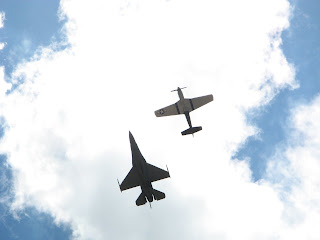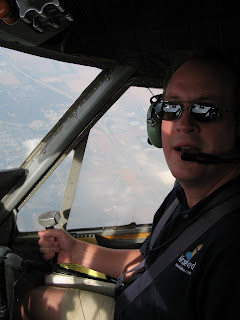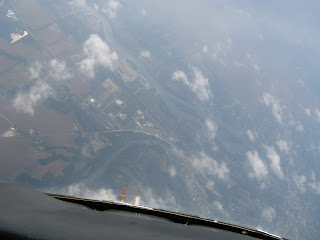 Four of the Internet’s most popular aviation podcasts will conduct an online “formation flight” during the week of February 3, 2008. That week, each of the shows will cover a different aspect of purchasing, selling, and owning general aviation aircraft.
Four of the Internet’s most popular aviation podcasts will conduct an online “formation flight” during the week of February 3, 2008. That week, each of the shows will cover a different aspect of purchasing, selling, and owning general aviation aircraft.
This is the first time that the leading general aviation podcasts have coordinated episodes in this way.
“Each of our podcasts covers different parts of general aviation in different ways,” said Jack Hodgson of Uncontrolled Airspace. “Ever since we were all on a panel together, at the AirVenture Oshkosh air show last summer, we’ve stayed in touch and have been talking about ways to leverage each of our strengths.”
“There’s a lot of expertise among the producers and hosts,” said Will Hawkins of the Pilot’s Flight PodLog, “and we’ll be able to provide listeners a solid set of viewpoints about most of the major issues surrounding aircraft transactions and ownership.”
“We’re all fans of each other’s shows and it’s a great way to carry on the dialogue about this thing that we all love,” said Jason Miller of The Finer Points. “From flight training to legal aspects to how to successfully share an aircraft with others – we’re really going to be able to cover the flight line for the listeners.”
“With four shows participating, we create synergies for the aviation audience that we all hope will call attention to the lineup of media available to pilots, owners, and aviation enthusiasts,” said Steve Tupper of Airspeed. “It’s really quite amazing the amount of high-quality programming available for free over the Internet and we all want to expand the coverage of this medium to reach as many aviators as we can.”
A “podcast” can be thought of as an Internet radio or TV show. Producers post sound and/or video files on the Internet. They can then be downloaded using a common web browser or a program with special podcast capabilities such as Apple’s iTunes. An iPod is not needed to enjoy podcasts. They can downloaded to a portable audio/video device (such as iPods and other MP3 players) or watched on a regular desktop or laptop computer.
“General aviation” is private and commercial aviation other than scheduled airline flights and military operations. It runs the gamut from corporate jets to single-seat ultralight aircraft and everything in between.
Information about the respective podcasts follows in alphabetical order by show title.
Airspeed will cover the legal aspects of purchases, sales, leases, and fractional interests, as well as the tax aspects of owning all or a part of an aircraft. Airspeed is an aviation and aerospace features show hosted by Michigan-based pilot and technology and aviation lawyer Steve Tupper (known to many by his radio alter ego of “Stephen Force”). steve@airspeedonline.com; http://www.airspeedonline.com/; 248-470-7944.
The Finer Points will cover the flight training necessary and helpful to become familiar with a new aircraft. This is especially important in that many pilots who purchase (or buy into) different aircraft are moving up to new levels of complexity and performance and safety, efficiency (and insurance!) all depend upon adequate training. The Finer Points features California-based flight instructor and new media producer Jason Miller. Jason@ontheflightline.com; http://www.thefinerpoints.net/.
The Pilot’s Flight PodLog will cover the host’s recent experiences in buying into an airplane and his co-owner will join in the discussion. The Pilot’s Flight PodLog is a “hangar-flying” show that features one-on-one conversations with host and west-coast pilot Will Hawkins. pilotwill@sbcglobal.net; http://web.mac.com/pilotwill/Site/Home.html.
Uncontrolled Airspace’s panelists have a wide variety of ownership experiences among them and the panelists and a guest will cover both personal experiences and lessons learned from the experiences of others. Uncontrolled Airspace has a “hangar-flying” format and is hosted by pilot, freelance writer, and new media producer Jack Hodgson, aviation photographer, senior editor of Kit Planes magazine and US editor of London’s World Aircraft Sales magazine Dave Higdon, and editor-in-chief of Aviation Safety magazine and contributing editor of AvWeb Biz Jeb Burnside. podcast@uncontrolledairspace.com; http://www.uncontrolledairspace.com/.








